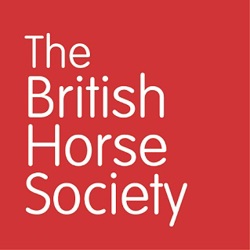
Buying second-hand can get you a great bargain, and a well-cared for, used saddle or bridle can often be a very good buy when you’re watching the pennies. A quick look online will reveal a whole host of second-hand tack available, and it can be tempting to snap up what appears to be a bargain, but as the saying goes ‘buyer beware’. To ensure you really are bagging a bargain that’s safe for you and your horse, The Society of Master Saddlers (SMS) and British Horse Society (BHS) has some easy-to-follow advice.
Buy from a trusted source
If you’re opting to buy second-hand, we’d recommend that you start your search with your local saddlery shop or SMS Qualified Saddle Fitter. They will often have a stock of second-hand saddles which will have undergone a series of safety checks. Also, whether you’re buying new or second-hand having the saddle correctly fitted is essential for the safety and comfort of you and your horse.
A saddle that has been used on another horse will have adapted and settled into their shape. A SMS Qualified Saddle Fitter will spot any areas which need to be re-flocked or adjusted to ensure the best possible fit on your horse.

Do your checks if buying privately
If you chose to buy a second-hand saddle privately, where possible we would highly recommend getting a qualified saddler to check it over before parting with your money. It may cost you a little bit extra, but this is money well spent to ensure the saddle is safe to use. Once purchased, always have the saddle fitted by a SMS Qualified Saddle Fitter. What appears to be a cheap saddle can work out to be very expensive if it’s damaged or doesn’t fit and causes discomfort to your horse.

Essential checks
We would always suggest seeing the saddle before buying – here are four essential checks to make:
- First impressions
Assess the overall appearance of the saddle, if it’s been well looked after the leather should feel firm but supple. Creases or ripples in a saddle seat could be a sign of a weakened or broken tree (the frame on which the saddle is built).
- Look for signs of wear and damage
Check for areas of wear on the saddle - girth straps are the most likely place to find cracked and worn leather, and check for fraying of the webs that girth straps are attached to. Scratches, scuffing and damage to the pommel and cantle may indicate that a saddle has been dropped or damaged in a fall. If you see signs of repair, ask the seller why and when this was done.
- Check the tree
A saddle that has a damaged tree shouldn’t be used. You can check the tree isn’t broken by holding the saddle lengthwise with the pommel against your thigh. Grip the cantle and gently pull it towards you. A sound tree will flex a little, but an excessive amount of give suggests a broken tree.
- Look out for rot
Make sure to check for signs of loose or rotting stitching on the girth straps and d-rings.

Buying without seeing
This route isn’t something we would recommend but if you do choose to do this ask the seller to send you clear photographs of the saddle from all angles, including the underside and the panels. It’s worth asking the seller if they will take the product back and refund your money if it’s not suitable.
Other second-hand items of tack
The same advice should be followed for any items of second-hand tack that you buy. Whether it’s a bridle, stirrup leathers or a girth, be vigilant and check it over thoroughly for any signs of damage or wear. Adverts stating an item, especially a bridle, using phrases like ‘soft as butter’ usually mean the leather is poor quality or has been over oiled.
Also, remember to check all buckles and fastenings – in particular the billets and hooks on bridles. If adjustment holes on straps or the holes on billets and hooks are stretched don’t buy the bridle as potentially it isn’t safe to use. Don’t be afraid to ask the seller questions, and if you’re in any doubt don’t buy it.

To find out more information on The Society of Master Saddlers and to find your nearest SMS member visit www.mastersaddlers.co.uk or contact us on 01449 711642.
For more information on the different ways you can reduce costs without compromising your horse’s welfare visit https://www.bhs.org.uk/horse-care-and-welfare/health-care-management/cutting-costs/
Terms of Reference
Qualified SMS Saddler: someone who can make and repair a saddle and would be best to check a saddle for quality assurance. A Qualified Craft member must have been in the trade for at least 4 years and hold the City & Guilds Level III Advanced qualification in their area of specialisation, plus one other Level III in the City & Guilds Saddlery Skills Assessment Scheme.
Qualified SMS Saddle Fitter: someone who can check an existing saddle fit and make flocking adjustments if need be. A Qualified Fitter member must pass the Society of Master Saddlers’ City & Guilds Qualified (Saddle or Bridle) Fitting Assessment and Qualified Saddle Fitters will also hold the Society Flocking qualification.
Get in touch – we’re here to help
The BHS Horse Care and Welfare Team are here to help and can offer you further advice with any questions you may have. Contact us on 02476 840517* or email welfare@bhs.org.uk – You can also get in touch with us via our social media channels.
Opening times are 8:35am - 5pm from Monday – Thursday and 8:35am - 3pm on Friday.
*Calls may be recorded for monitoring purposes.
